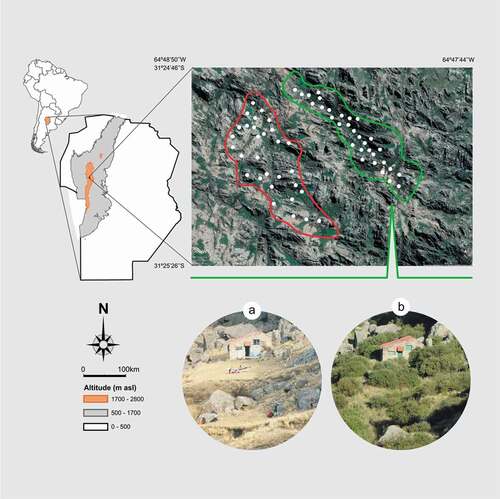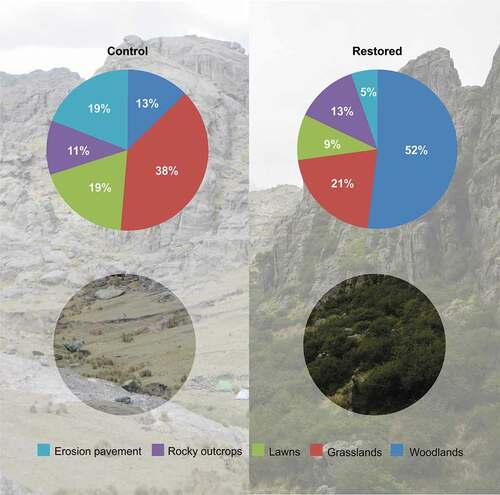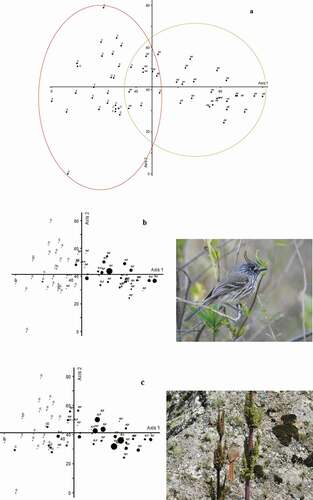Figures & data
Figure 1. Study area showing the restoration site in 2000 (a) and 2015 (b). Circles indicate the location of bird surveys; restoration and control sites are delimited by green and red lines, respectively

Figure 2. Proportion of each physiognomic unit in the control (left) and restoration (right) sites, 20 years after the start of the restoration project in 1997

Figure 3. (a) Detrended correspondence analysis (DCA) showing the ordination of bird species. The restoration and control sites are indicated with a green and red circle, respectively. (b) and (c) Anairetes parulus and Leptasthenura fuliginiceps abundances, respectively, in both sites; the point size indicates the abundance of the species at each survey points. RF: restoration site; C: control site

Table 1. Bird species and trophic guilds significantly associated with the restoration and control sites
